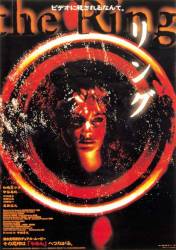Trivia: The film is loosely based on an ongoing series of novels by Japanese author Koji Suzuki. While the film shares the basic premise of the novels, the details are vastly different. (Notably, the books feature heavy and increasing science-fiction overtones that are absent from the films.) The American remake, "The Ring," is based more directly on this film and its sequel "Ringu 2" than the novels.
Trivia: Sadako's mother, Shizuko, was loosely based on a real person - Chizuko Mifune. Mifune was a self-proclaimed psychic. Just like Shizuko in the film, in real life Mifune took part in a press event to prove her abilities, but was labeled a fraud by reporters, and later committed suicide.
Trivia: During the climax, Sadako's unnatural movement was accomplished with a very simple in-camera effect - the actress performed the scene backwards. The footage was then reversed, which gave her movements an uncanny feeling, since they weren't quite "right." In addition, to further aid in giving her an uncanny appearance, the closeup of her eyeball in the final scenes of the film were actually shot with a male actor's eye... again to subtly make it feel not quite "right."






Answer: It follows it fairly closely, but removes some Japanese cultural references. All of the names are changed, the psychic powers of some characters are removed, and all references to "sea goblins" are gone. Samara is a young girl (not a grown woman like Sadako) and speaks to victims on the phone, rather than the phone call only having strange noises. The lead character is more heroic and investigatory and there are more special effects (for example, the victims' bodies are deformed).
Moose ★